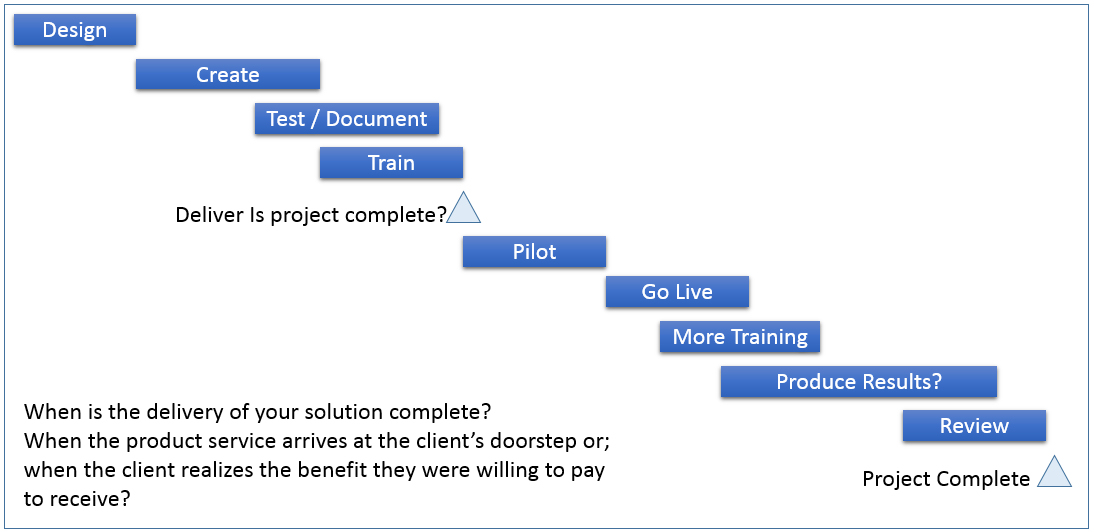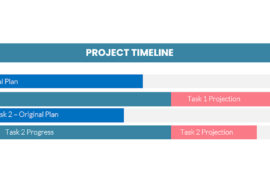There I am at the PMI 2016 Global Congress in San Diego listening to keynote speaker Sue Gardner. Ms. Gardner’s resume is enough to make you pause and take notice. She has worked with numerous Silicon Valley companies including Wikimedia who run the famous Wikipedia. She has been on Fortune Magazine’s  100 Most Powerful Women list and that alone is saying quite a bit. So, I was interested to hear her views on the future of leadership.
100 Most Powerful Women list and that alone is saying quite a bit. So, I was interested to hear her views on the future of leadership.
As is often the case when I listen to a good keynote speaker, I don’t usually get the benefit I’d have thought of prior to the talk but what I do get is surprising and surprisingly valuable. In this case, the realization of something important to me came as Ms. Gardner was talking about the movement of IT in many organizations from a “staff” function to a “line” function. She was describing how the world has changed in recent years, making IT services within an organization more a part of the delivery of whatever the organization creates than a support function to help behind the scenes.
This makes perfect sense in today’s world. Are you in banking? You’re not going to be in it long if you don’t have a hot new mobile app to deliver your service. Are you in travel? Your travel product almost certainly now needs to be delivered through the Internet. Are you in energy? Your products have to be “The Internet of Everything” enabled if you have any chance of being a leader in your industry… and so on.
So that’s where we were in the keynote when I had this realization. The reason that some organizations are reluctant to follow this model, I suddenly realized, is some of them think that the delivery of their product or service stops at the moment it leaves their building. If it’s software, then the second it has been downloaded (or if you’re old fashioned, shipped on a DVD out the door), the sale is complete. If you’re in travel, then the second you’ve completed the sale of the ticket, the transaction is over. Benefit delivered, money collected. Thank you very much.
The problem is the perspective.
If you’re the manufacturer; the deliverer of the service or product, it may seem like you’ve accomplished what’s important to you. But if you’re the client, this might only be the first step of many before you’re done. The client bought your service or product because they had a problem and they believe that what they bought from you will solve their problem.
It’s remindful of a conversation I had many years ago with an executive at a large project management software company. “If you’re committed to solution selling you’ll need to invest more effort in determining the problem,” I said to this VP. “Our problem is we need to sell more boxes,” he said. “Well that’s your problem, sure,” I replied. “But, it’s quite unlikely that it’s the problem of your client.”
He was stunned. He got it right away of course. He wasn’t stupid. But he realized in that moment that his thinking had been all from his own perspective. Solution Selling required getting into the shoes of the people who were buying.
The same thought process occurred to me this week listening to Ms. Gardner. If we think the delivery of the service of product is the end of the transation; the end of the sales process then who cares if IT makes a better app or a better in-the-cloud service. We’ve delivered the thing you asked for. Time for us to move on.
But, if you take the perspective of the client, then you’ll need to build into your thinking time, effort, money, services and attention that go from the delivery until the point where the client acknowledges that they have received benefit from whatever it was they acquired.
Did it solve the problem? Is the client’s world a better place?
Delivering a solution in a way that has your firm stand out from others means you have to ensure that whatever it is you sell actually solved something. It’s something that’s so easy to forget as part of the business is caught up in the next sales forecasts and another part of the business is busy building whatever the next client needed.
A good lesson for us all.




